Globalization and the Developing World: A Short Essay
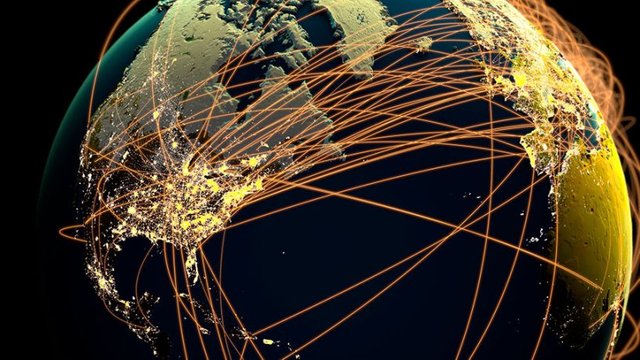
Globalization is a multidimensional and multilateral process. In this paper globalization will be defined as “a complex economic, political, cultural, and geographic process in which the mobility of capital, organizations, ideas, discourses, and peoples has taken a global or transnational form." (Bacchus 2015) However, the meaning varies between authors, scholars, and individuals. Throughout the literature, globalization is characterized by an increasing interdependence and integration of countries into the world economy and global political system as well as(html comment removed: more) an increased time-space compression made possible through modern technology. Globalization is claimed by many to be the panacea to the numerous problems of the developing world. The opening up of previously closed economies along with trade liberalization and membership within multilateral institutions is supposed to in theory reduce many of the problems the developing world suffers from such as poverty, inequality, and underdevelopment. This paper assesses the claim that globalization is the panacea to the developing world’s problems. It finds that both political and economic globalization can have a substantial impact on reducing many of the problems of the developing world, however, there is also potential for many negative effects.
Political Globalization and the Developing World
Political globalization is the increasing move by countries towards international multilateral forums and international institutions. In the world of globalization, the potential for developing countries to alleviate their current problems through such channels like the United Nations is substantial. With an increasing move towards world governance, a countries problems are now becoming not just their own, but the international communities. Worrying trends of endemic poverty, diseases, wars, illiteracy, gender inequalities and inequities and underdevelopment in the developing countries in general justifies the need for global assistance and efforts to address these vulnerabilities. (Kang 2014) The United Nations Millennium Development Goals (MGDs) are a prime example of this, a so-called ‘global solution to local problems’ that can substantially help contribute to social development within the developing world. Under this view then, the developing world’s problems can be effectively addressed through a transition from the nationalism-based globalization to universalization which may integrate the entire humanity through universal human values within the original peace framework of a border-less globe. (Anjum 2006)
The MDGs act as a way to monitor progress in the developing world as well as to put pressure on governments in developing countries to adopt policies to alleviate problems like poverty, inequality, disease and underdevelopment. It also provides a strong support role by providing additional funding in order to achieve the objectives. In order to help achieve the MDG goals, the United Nations urged economically advanced countries to progressively increase its official developmental assistance to the developing countries and to exert their best efforts to reach a minimum net amount of 0.7 percent of their gross national product at market prices by the middle of the decade. (UN Millennium Project Publications 2002) In response official development assistance from developed countries increased by 66 percent in real terms between 2000 and 2014, reaching $135.2 billion. (The Millennium Development Goals Report 2015) Crowdfunding through developed countries in order to help developing countries reduce their burdens which perpetuate and compound problems has significant potential for being the panacea to developing world’s problems. All 186 United Nation members at the time (2000) signed on to the commitment as well as numerous international organizations in order to achieve the stated goals by 2015. The Goals go as follows:
United Nations Millennium Development Goals
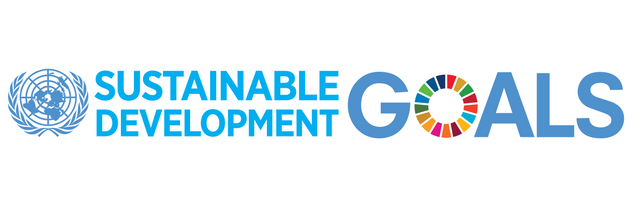
Goal 1: Eradicate Extreme Hunger and Poverty Goal 2: Achieve Universal Primary Education Goal 3: Promote Gender Equality and Empower Women Goal 4: Reduce Child Mortality Goal 5: Improve maternal Health Goal 6: Combat HIV/AIDS Goal 7: Ensure Environmental Sustainability Goal 8: Develop a Global Partnership for Development. (UN Millennium Project | About the MDGs 2002)
In regards to goal one, Hunger rates decreased globally from 18.7% in 1990-1992 to 11.3% in 2012-1014 and in developing countries from 23.4% to 13.5% during the same time periods, despite a rapidly growing population. (Friedrich 2014) In 1990, nearly half of the population in the developing world lived on less than $1.25 a day; that proportion dropped to 14 percent in 2015, while the proportion of undernourished people in developing regions has been almost halved. (The Millennium Development Goals Report 2015) A downside of this progress is that poverty reduction has not been universal with the majority (about three-quarters) of the reduction coming from China and their economic success in the global economy in the past few decades. However, through global commitments and allocation of funds to developing countries has the same effect of having a rise in domestic investment. It allows the allocation of other scare resources by developing governments to programs such as education and health-care which helps to promote human development and the formation of human capital, a major problem within the developing world.
Political Globalization as a Vehicle for Social Development?
Political globalization contributes many positive aspects and acts as a vehicle towards social development. This is because these ideals push and prompt governments of the developing world to embark on policy formulation and implementation that fights to eradicate hunger and poverty; strengthens advocacy, accountability, transparency and good governance in developing world; and promote funding to fight global ills such as HIV/ AIDS, malaria and tuberculosis; gender inequality and inequity and other inhuman atrocities such as crimes against humanity. (Kang’ethe 2014) However, in order for there to be success through this form of globalization the use and creation of other platforms of global governance are needed. Developing countries voices need to be heard internationally rather than having the developed countries mold and shape global governance structures and the ‘rules of the game’. Evidence supports this and that developing countries have begun to use their influence not only to further their own narrowly defined national interests but also to shape the global normative framework. (Kaul 2013) To assess the impact that political globalization can have on developing world’s problems it is important to evaluate and assess the current goals of the international community and the progress that has been made towards those established goals. Since the introduction of the MDGs in 2000 substantial progress has been made in all eight of the goals the global community has focused on. This means political globalization through global governance structures has the potential to be a panacea to the developing world’s problems.
Economic Globalization and the Developing World
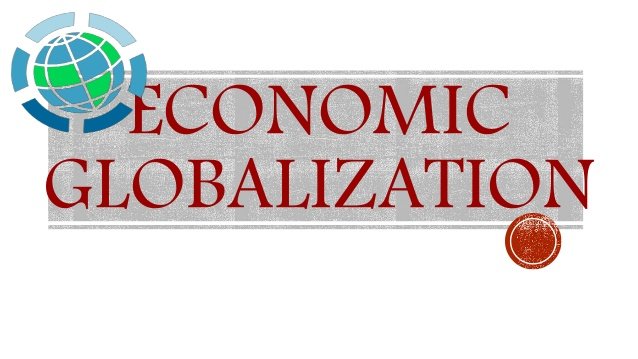
Economic globalization will be defined as the increasing economic integration and interdependence of national, regional and local economies across the world through an intensification of cross-border movement of goods, services, technologies and capital. (Economic Globalization 2014) One of the main debates around economic globalization is if it creates or alleviates poverty and inequality within developing countries. These are both substantial problems within the developing world because many countries lack many of the tools to facilitate the engine of social development. In theory, economic liberalization should increase the flow of trade and investment within and between countries. This trade and investment, many economists would argue, helps to induce increased growth in developing countries and would point to the fact that GDP and GNP growth rates in developing countries are on average higher than those in developed countries. (World Bank Report) Growth leads to an increase in incomes in absolute terms even if inequality is rising. These higher incomes for the poor means there is an increase in living conditions for people in developing countries. However, a problem with this is that much faster population growth in most developing countries is offsetting comparatively faster GNP growth, causing GNP per capita growth rates in these countries to be low or even negative. (World Bank Report) The basis for my argument will center on the potential impact foreign direct investment (FDI) has to alleviate the developing world’s problems.
Foreign Direct Investment
Integration into the world economy by developing countries has contributed to the relief of many problems in the developing world. Countries try to attract FDI for various reasons, among which are the promotion of growth and the transfer of technology. (Griffith 2006) A major criticism of globalization has been that although many developing countries opened their economy to FDI, the majority was still focused within the Global North. However according to the latest (2015) United Nations World Development report; inward FDI flows to developing economies reached their highest level at $681 billion, extending their lead in global inflows over the global North. (World Investment Report 2015) The trend has changed and since 2013, developing countries have taken the lead on FDI over developed. This surge in FDI has been also followed by robust growth in many developing economies such as in Africa. However, the importance of an increase in FDI relates to research by Tomohara et al, 2011 where they examine whether foreign direct investment benefits workers employed by local establishments in a host developing country.
Their analysis shows that workers in developing countries receive wages above the market-based wage that would otherwise prevail in the absence of foreign establishments. (Tomohara 2011) More FDI means more foreign establishments while higher wages for people in poor countries means better living conditions for those that can participate and helps with the establishment of a middle-class within society. The number of people in the working middle class—living on more than $4 a day—has almost tripled between 1991 and 2015 and now makes up half the workforce in the developing regions, up from just 18 percent in 1991. (The Millennium Development Goals Report 2015) While also higher FDI means more money for governments to spend on public services such as health and education. In one study suggests that economic globalization contributes to poverty reduction but with a larger magnitude in the presence of infrastructure instruments. (Sena 2015) FDI then becomes an important tool for developing countries because they can use surplus funds towards developing these instruments that drive human development thus, helping to reduce poverty. Where it can have negative effects is within the misappropriation of funds by governments through either ill-advised policy, corruption or negative international pressures. The empirical evidence also supports the idea that globalization driven by the reduction in information access cost and the removal of barriers to their dissemination has the greatest impact on poverty reduction. (Sena 2015)
The Dark Side of Globalization
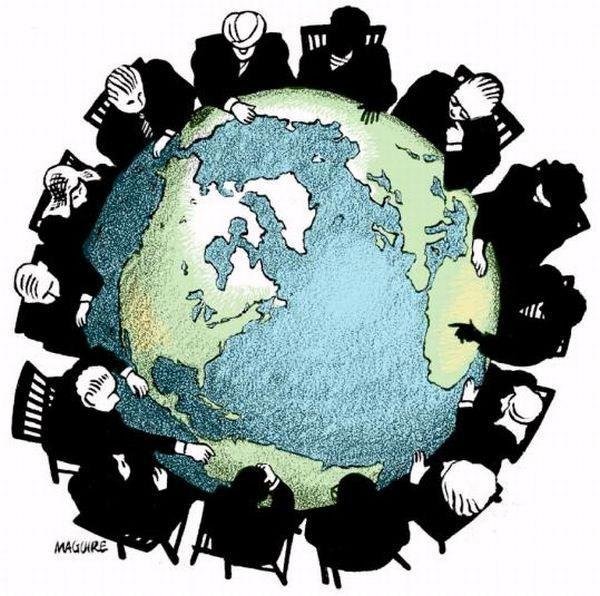
Globalization can substantially contribute towards helping to solve the developing world’s problems however, there are also many risks associated with it that governments need to learn to effectively manage. The Asian Financial Crisis in 1997 is a prime example of the dangers associated with economic globalization. Due to the increased globalization of financial markets, crises tend to become more severe and contagious even if the affected countries have strong macroeconomic fundamentals. (Jeon 2010) Developing countries then are prone towards economic instability and crisis through contagion in the world economy. This is supported empirically by Reuveny et al, where they show that trade liberalization in the South is largely driven by Southern autonomous inertia and periodic economic crisis. (Reuveny 2007) There is also the problem of inequality that is created within economic globalization that is inherent within a capitalist driven system. Those with the skills and finance to succeed off the start do, while those at the bottom are left even further off behind made worse through the eventual accumulation of capital within the few of society. This can have severe compounding effects on developing countries unless they are addressed by governments. Furthermore, FDI that is directed in developing countries can contribute to perpetuating inequality if the focus is on primarily capital-intensive goods. This is because many developing countries have a labor surplus, so the allocation of jobs is small which leads to reinforcing duel-sector economies.
Conclusion
Globalization is a complex economic, political, cultural, and geographic process in which the mobility of capital, organizations, ideas, discourses, and peoples has taken a global or transnational form. This paper focused on the potential of two aspects of globalization; political and economic in order to assess its potential as a solution to the developing world’s problems. Globalization can be the panacea to the developing world’s problems. Political integration by developing countries is recommended because the international community is starting to internalize the developing world’s problems as their own. The establishment of MDGs by the international community is just one example which has shown substantial progress. On the economic side, globalization can help to spur robust growth through increased trade and investment within countries while higher wages paid by international firms can help with the establishment of a middle-class within the developing world. However, economic globalization has potential problems. By opening up economies to world markets also makes them more prone the international shocks and stagnation through the world economy while also economic globalization can contribute to inequality unless governments take effective measures. However, overall globalization can be an effective tool to help the developing world solve many of their problems. I would love to hear everybody's thoughts:
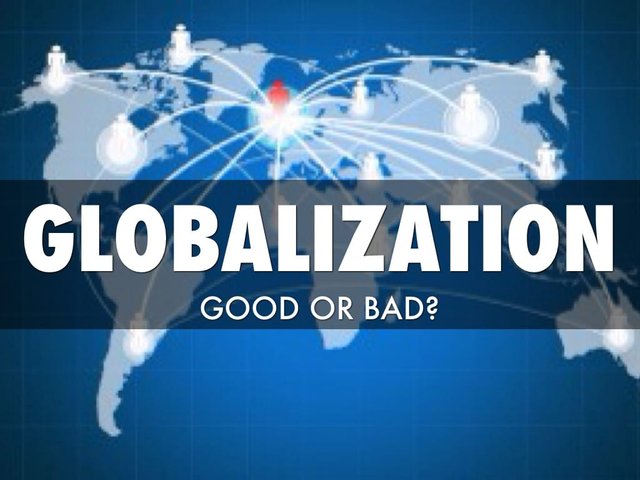
Bibliography
Anjum, Muhammad Iqbal. “Globalization at Crossroads of Warfare, Revolution, and Universalization.” Humanomics 22, no. 3 (2006): 162-77. doi: .
Bacchus, Nazreen. “The Effects of Globalization on Women in Developing Nations.” Www1.aucegypt.edu. 2005. http://www1.aucegypt.edu/src/globalization/Documents/effect of glob on women.pdf .
“Economic Globalization.” Wikipedia. September 24, 2014. https://en.wikipedia.org/wiki/Economic_globalization .
“Economic Growth Rates.” World Bank. http://www.worldbank.org/depweb/beyond/beyondco/beg_04.pdf.
Friedrich, M.J. “Global State of Hunger.” JAMA 312, no. 19 (2014). doi:10.1001/jama.2014.14593. http://jama.jamanetwork.com/article.aspx?articleid=1935133
Griffith, W.H. “Does Foreign Direct Investment Promote Development?” Journal of Economic Issues 40, no. 4 (2006): 1174-176. http://www.jstor.org/stable/4228335?seq=1#page_scan_tab_contents.
Jeon, Bang. “From The 1997-98 Asian Financial Crisis to the 2008-09 Global Economic Crisis: Lessons From Korea’s Experience.” East Asia Law Review 5, no. 103 (2010): 103-54. http://scholarship.law.upenn.edu/cgi/viewcontent.cgi?article=1041&context=ealr.
Kang’ethe, S.M. “Panacea and Perfidy of Globalisation as an Engine of Social Development in Developing Countries.” Journal of Human Ecology 42, no. 2 (2014): 193-200. http://www.krepublishers.com/02-Journals/JHE/JHE-47-0-000-14-Web/JHE-47-2-000-14-Abst-PDF/JHE-47-2-193-14-2493-Kangethe-S-M/JHE-47-2-193-14-2493-Kangethe-S-M-Tx[11].pdf.
Kaul, Inge. “The Rise of the Global South: Implications for the Provisioning of Global Public Goods.” United NationsDevelopment Programme. 2013. http://hdr.undp.org/sites/default/files/hdro_1308_kaul.pdf.
Reuveny, Rafael, and William Thompson. “The Limits of Economic Globalization: Still Another North-South Cleavage?” International Journal of Comparative Sociology 48, no. 2-3 (2007): 107-35. doi:10.1177/0020715207075397. http://cos.sagepub.com/content/48/2-3/107.abstract
Sena, Alastaire. “Globalization, Poverty And Role Of Infrastructures.” Journal of Economics and Political Economy 2, no. 1 (2015). doi:10.1453/jepe.v2i1s.225. http://kspjournals.org/index.php/JEPE/article/view/225
"The Millennium Development Goals Report 2015.” UN.org. 2015. http://www.un.org/millenniumgoals/2015_MDG_Report/pdf/MDG 2015-rev-(July-1).pdf.
Tomohara, Akinori, and Sadayuki Takii. “Does Globalization Benefit Developing Countries? Effects of FDI on Local Wages.” Journal of Policy Modeling 33, no. 3 (2011): 511-21. http://econpapers.repec.org/article/eeejpolmo/v_3a33_3ay_3a2011_3ai_3a3_3ap_3a511-521.htm .
“UN Millennium Project | About the MDGs.” UN Millennium Project | About the MDGs. 2002. http://www.unmillenniumproject.org/goals/ .
” UN Millennium Project Publications.” UN Millennium Project | Publications. 2002. http://www.unmillenniumproject.org/reports/costs_benefits2.htm.
“World Investment Report 2015.” IMF. 2015. https://www.imf.org/external/pubs/ft/bop/2015/pdf/15-21.pdf.